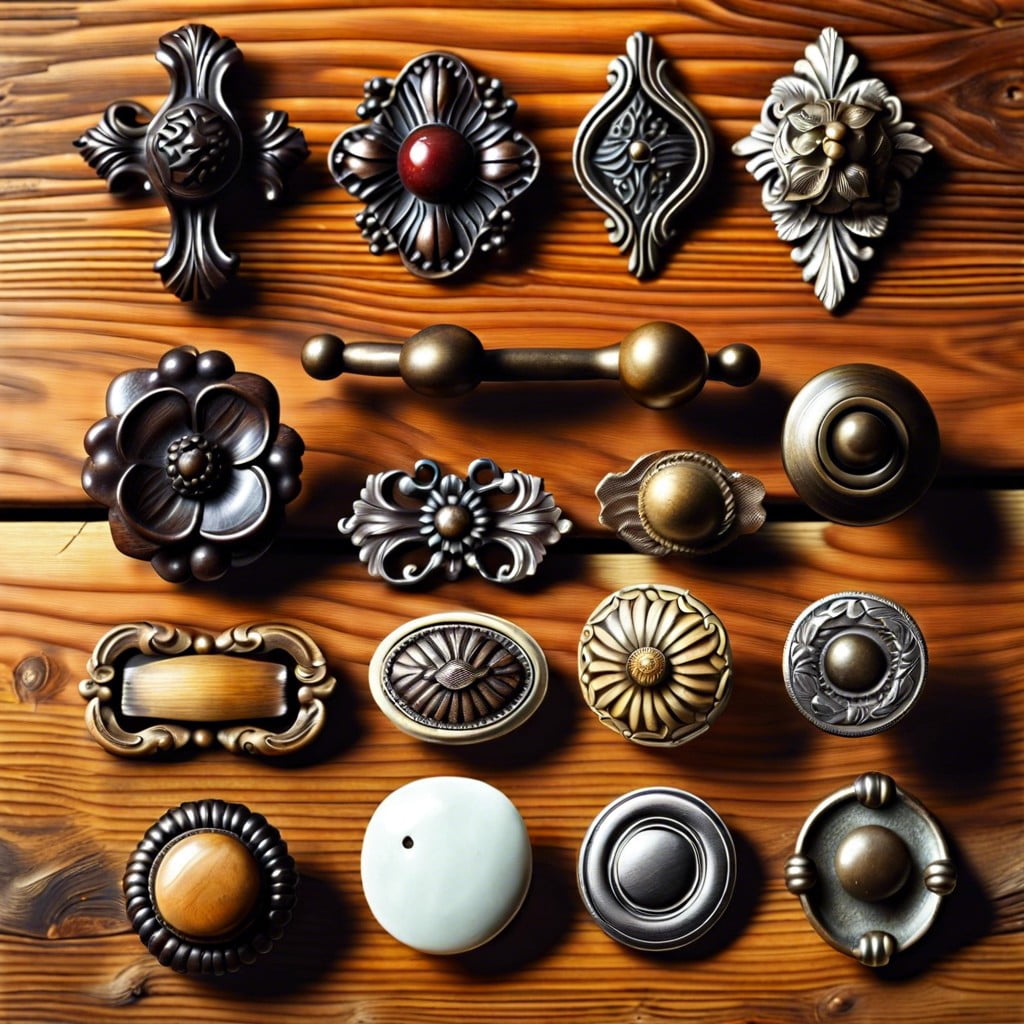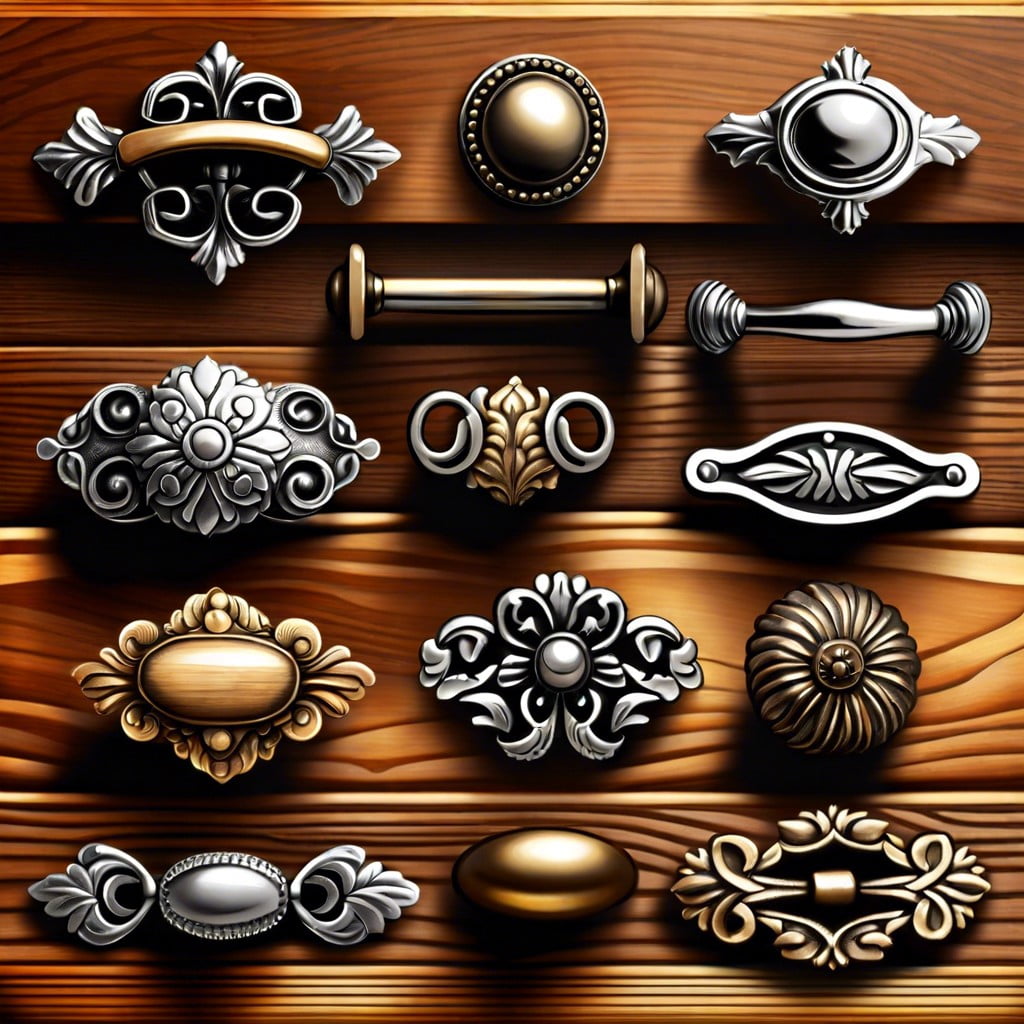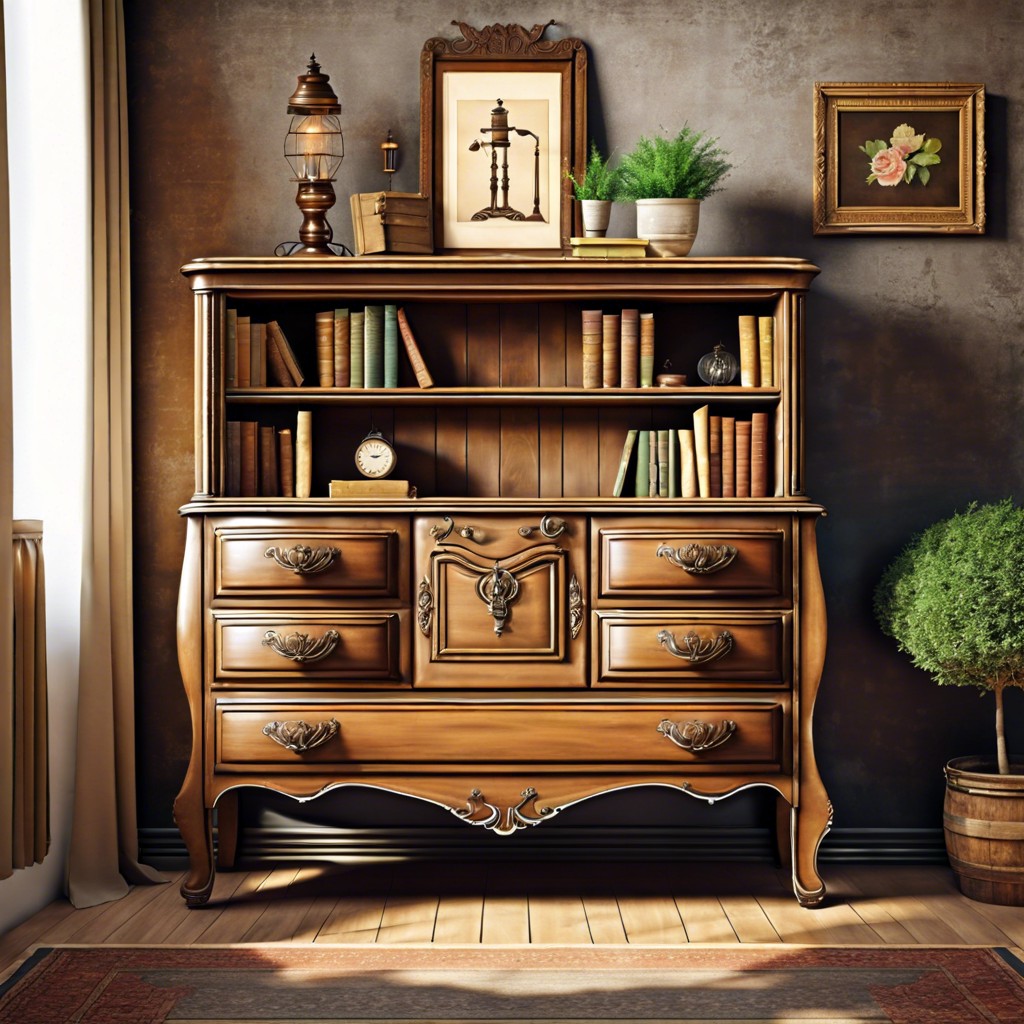Last updated on
Discover how to choose the right antique drawer pulls to elevate your furniture’s style and functionality.
Key takeaways:
- Antique drawer pulls offer a glimpse into historical craftsmanship and design preference.
- Recognizing different styles helps identify the origins and authenticity of drawer pulls.
- Age, materials, craftsmanship, rarity, and condition affect the value of antique drawer pulls.
- Preserve antique drawer pulls by cleaning gently, polishing with specialized metal polish, regularly checking for damage, controlling the environment, and seeking professional help if needed.
- Authenticate antique drawer pulls by examining the material, inspecting the patina, considering the manufacturing technique, and looking for maker’s marks or hallmarks.
Historical Overview of Antique Drawer Pulls

Antique drawer pulls trace back to the 17th century, originally functional but soon became decorative. The Victorian era marked a surge in ornate designs, heavily influenced by the Arts and Crafts movement. Craftsmen utilized brass, iron, and glass, ensuring each piece wasn’t just functional but also aesthetically pleasing. This evolution mirrors societal changes and technological advancements of the time. Each period, from Rococo to Art Nouveau, introduced distinct styles, often reflecting the art and culture of the era. Collecting these pieces today offers a glimpse into historical craftsmanship and design preference.
Identifying Different Styles of Antique Drawer Pulls

Drawer pulls have evolved greatly over centuries, each era leaving its distinct imprint on design aesthetics and functionality. Recognizing these styles is crucial to understanding their origins and authenticity.
From the ornate designs of the Victorian era to the streamlined shapes of the Mid-Century Modern period, the style of a drawer pull is often reflective of the broader design trends of its time. Victorian pulls tend to feature intricate patterns and motifs, using materials like brass and porcelain. In contrast, pulls from the Art Deco period showcase geometric shapes and are often made from chrome or bakelite to embody the era’s fascination with the machine age.
Colonial style pulls are typically simple, made from iron or brass, demonstrating the utilitarian approach of early American decor. Meanwhile, Eastlake pulls, stemming from the late 19th century, display more detail than Colonial styles but are still less ornate than their Victorian counterparts. They often feature stark, incised lines and patterns drawn from nature.
Understanding these styles involves not just recognizing the visual attributes but also appreciating the historical and cultural contexts from which they emerged. This insight significantly aids in the identification and valuation of antique pieces.
Factors Affecting the Value of Antique Drawer Pulls
The age of antique drawer pulls often plays a significant role in determining their value. Generally, the older the piece, the more valuable it may be, provided it has been well-preserved.
Materials also significantly impact worth. Drawer pulls made from precious metals like gold, silver, or even high-quality brass usually fetch higher prices than those crafted from common metals or materials.
Craftsmanship is another critical factor. Handcrafted pieces, especially those exhibiting fine detail and artistry, are typically more sought after than mass-produced items.
The rarity of a design can catapult its value. A drawer pull that features a unique pattern or was produced in limited quantities might be highly prized by collectors.
Provenance, or the history of the piece, affects its allure as well. Pulls that were once part of significant furniture or owned by notable figures can carry added value based on their storied pasts.
Finally, condition matters immensely. Even a piece from a desired period, if damaged or altered, may see its value decrease compared to one that is in pristine condition.
Preservation and Care Tips for Antique Drawer Pulls
To maintain the luster and functionality of antique drawer pulls, a gentle approach is key. Here are effective strategies to preserve their historical value and aesthetic:
- Cleaning: Use a soft cloth and mild soap solution to carefully clean the pulls. Avoid harsh chemicals or abrasive materials, which can damage the patina or finish.
- Polishing: Apply a specialized metal polish designed for antique metals. This will enhance their shine without corroding the original material.
- Regular checks: Inspect the screws and backplates for signs of rust or wear. Tighten loose parts with the correct tools to prevent damage during regular use.
- Environmental control: Store or display the furniture in a stable, humidity-controlled environment. Extreme temperature shifts can cause the metal to expand or contract, leading to long-term damage.
- Professional help: For severely damaged or very delicate pulls, consult with a professional conservator. They possess the expertise to restore antiques without diminishing their value.
By adhering to these precautions, you ensure that your antique drawer pulls remain both functional and beautifully preserved.
How to Authenticate Antique Drawer Pulls
Authentication of antique drawer pulls involves several key steps. First, examine the material. Authentic pieces from the 18th and 19th centuries are typically made of brass, bronze, or iron. Plastic or lightweight metals suggest modern reproductions.
Next, look closely at the patina—age-related changes in color and texture. Genuine antique metals develop a natural patina that is uneven and cannot easily be faked. Uniform discoloration might indicate artificial aging.
Considering the manufacturing technique can also provide clues. Older drawer pulls were often handcrafted, resulting in slight irregularities and unique marks. In contrast, modern techniques produce uniform and flawless items.
Lastly, inspect any maker’s marks or hallmarks. These are often stamped or cast into the back of the piece and can be researched to verify authenticity and date the pull. Engage with collectors or consult reference guides specific to antique hardware for comparison.
Each of these factors contributes to determining the authenticity of antique drawer pulls, aiding collectors and enthusiasts in making informed decisions.




